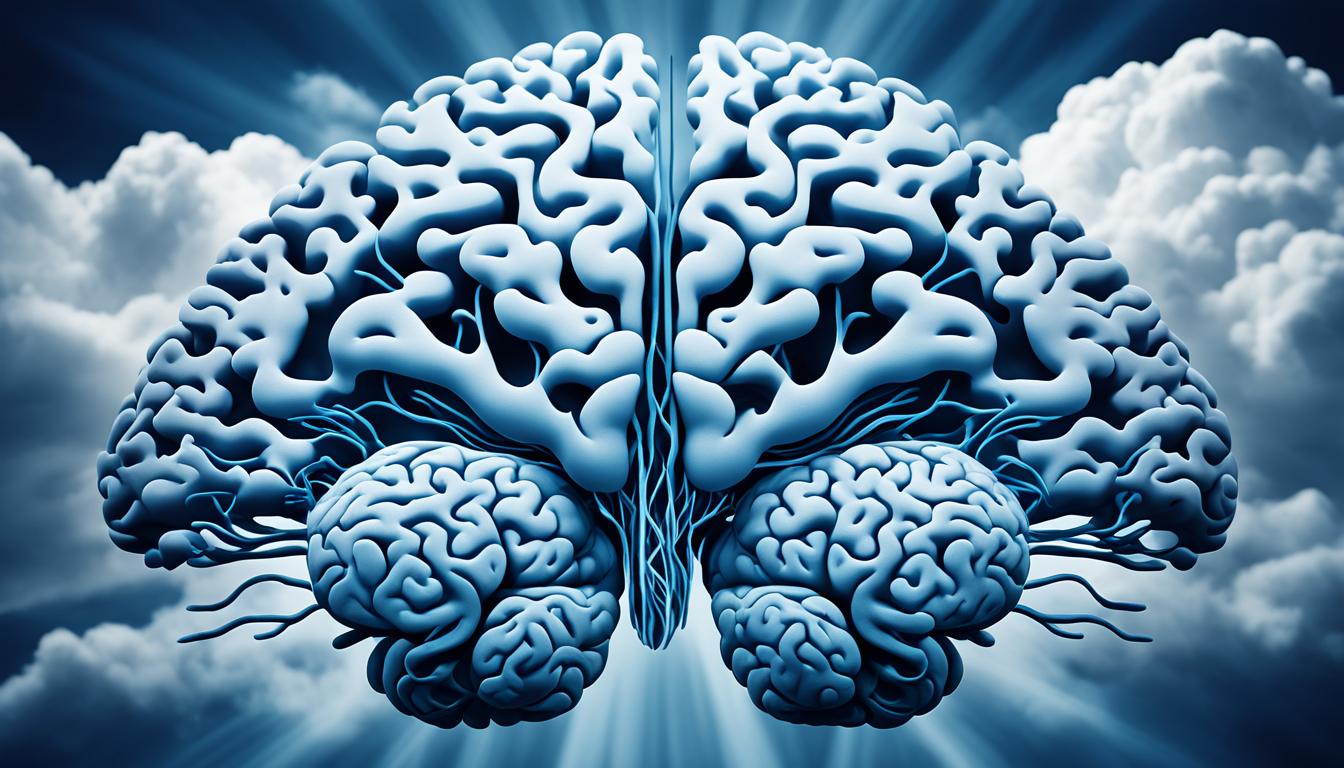Lewy body dementia (LBD) is a severe brain disorder that mainly affects older people. It causes changes in how they think and move. People with LBD have abnormal protein deposits in their brains called Lewy bodies. This leads to a decline in their mental functions.
There are two main types of LBD. One is called dementia with Lewy bodies. The other is Parkinson’s disease dementia. Even though LBD is quite common, it’s hard to diagnose and manage. Unfortunately, there is no known cure for LBD. But, treatments can help with the symptoms and make life better.
- Lewy body dementia (LBD) is a neurodegenerative disease that affects older adults.
- LBD is characterized by the presence of Lewy bodies in the brain, which lead to cognitive decline.
- There are two forms of LBD – dementia with Lewy bodies and Parkinson’s disease dementia.
- Accurate diagnosis and management of LBD can be challenging.
- While there is no cure for LBD, various treatment options are available to manage symptoms.
The Basics of Lewy Body Dementia
Lewy body dementia (LBD) is a disease that affects the brain. It is marked by the presence of Lewy bodies, which are abnormal deposits. These contain a protein called alpha-synuclein. They mess with brain chemicals, causing various symptoms.
The key feature of LBD is its impact on thinking and memory. People with LBD can have trouble with problem-solving and making decisions. These issues greatly affect their daily life and happiness.
LBD also leads to problems with movement. It can cause muscle stiffness, slow movements, and tremors. These symptoms are much like those in Parkinson’s disease, showing how LBD and Parkinson’s are linked.
People with LBD might also see changes in their behavior and mood. They could have new eating habits, problems sleeping, see or hear things that aren’t there, and have trouble staying focused. Feelings of depression and anxiety are common as well.
Key Points:
- Lewy body dementia is known for the Lewy bodies in the brain.
- These Lewy bodies include a protein that affects brain chemicals.
- This can lead to issues with thinking and memory, plus movement problems.
- Other symptoms include behavior and mood changes, as well as sleep and attention issues.
| Symptoms of Lewy Body Dementia | Description |
|---|---|
| Cognitive decline | Includes problems with thinking, memory, attention, and executive function |
| Movement problems | Includes muscle stiffness, slow movements, and tremors |
| Behavioral changes | May experience changes in behavior, mood, and bodily functions |
The Role of Alpha-Synuclein:
Alpha-synuclein is a protein in the brain. We don’t entirely understand its role. In LBD, it clumps to form Lewy bodies. These cause trouble in brain cell communication. They affect the brain’s chemicals, leading to LBD symptoms.
Who is Affected by LBD and its Causes
Lewy body dementia (LBD) is most common in older adults. Its symptoms start slowly and get worse over time. The disease can last from two to 20 years, usually about five to seven. It affects a bit more men than women. But, even younger people can get LBD, though it’s not common for them.
Age is a big factor, but others play a role too. Gene mutations, or changes, can make LBD more likely. If you have conditions like Parkinson’s or Alzheimer’s, your risk is also higher.
Your lifestyle matters for LBD risk too. Being active, eating well, and keeping health problems in check can lower your risk. But, smoking and drinking too much can raise it.
Risk Factors for LBD:
- Age
- Genetic factors
- Underlying health conditions (e.g., Parkinson’s disease, Alzheimer’s disease)
- Lifestyle choices (e.g., smoking, excessive alcohol consumption)
Knowing LBD’s risk factors helps us be aware and take steps to lower our risk. Even though the exact cause is not fully understood, ongoing research seeks to shed light on how we can prevent this type of dementia.
Management and Outlook for LBD
Lewy body dementia (LBD) has no cure, but treatments help with its symptoms. The main goal of treatment is to keep people functioning as long as possible. Effectively managing symptoms can greatly improve life quality for those affected.
Care and support are important in dealing with LBD. Doctors may use a mix of drugs to treat issues like memory loss or mood swings. They might also suggest non-medical options, including therapy and exercise, to keep the mind and body strong.
The outlook for LBD patients can vary a lot. It depends on their health and symptom seriousness. Some might see slower symptom growth, helping them remain independent for longer. Meanwhile, others might face quicker decline. Either way, having the right support and information is key for both patients and their helpers.
There are many resources out there to help with LBD. Support groups and online communities offer advice and connect you with others going through the same thing. Organizations like the Lewy Body Dementia Association are great for getting specific LBD information, caregiver help, and research news.

